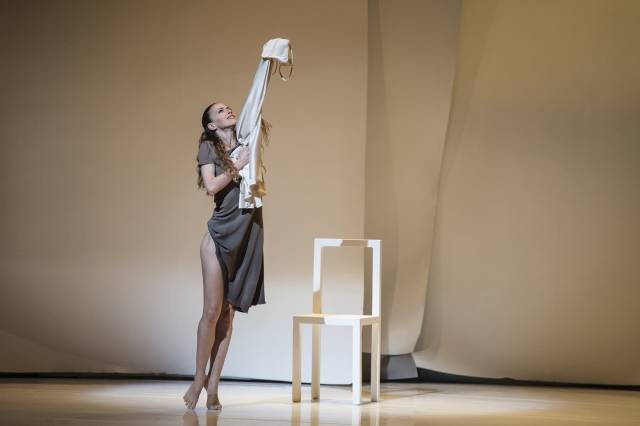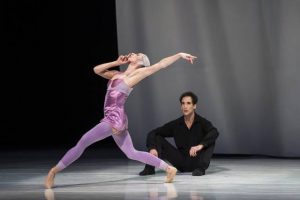

Based in simplistic sets and dripping with avant garde costumes, Les Ballets de Monte Carlo’s production of Cinderella proves that a classic story ballet doesn’t have to be classical.
The national ballet company of Monaco celebrates its 30th anniversary this year, and brought Jean-Christophe Maillot’s staging of Cendrillon (Cinderella), to New York City Center February 18-20.
While traditional productions of the children’s fairy tale can take on something of a stale feeling, Maillot’s interpretation freshens the timeless story without changing it fundamentally. Maillot dives deeper into Cinderella’s history, incorporating her mother and father, characters who are traditionally noticeable in the story only by their absence.
The night opens on a pas de deux; Cinderella, danced by Anjara Ballesteros, is remembering how happy her parents were before her mother died. Her father, danced by Gabriele Corrado, aches with the memory as well, and though he has married again, neither is quite ready to let go. It is this that carries the storyline of Mr. Maillot’s nontraditional telling.
Cinderella’s fairy godmother is, in fact, her mother come back to watch over her. Danced by Mimoza Koike, the role of the fairy remains a prominent one. Ms. Koike flits around the stage--instigating slyly while covered in glitter. Her footwork was clean and simple, though for a role danced in pointe shoes, she spent much of the evening on demi-pointe.
Cinderella is a story that typically hinges on a shoe, but Mr. Maillot manages to bypass that with his barefoot heroine. Her movement is more contemporary than classical ballet, and the fact that she dances through the ball in a plain white silk dress and feet coated in nothing more than glitter is a testament to Ms. Ballesteros’s technique and stage presence alike.

Her meeting with The Prince, Lucien Postlewiate, is marked by a dreamlike quality that imbues the entire theater with the feeling of love at first sight. A gorgeous pas de deux had the audience captivated, while intimate moments like sneaking up on each other and laughing together on the stark white steps added a layer of relatability.
Mr. Maillot’s production also incorporates characters and scenes not in the traditional telling of the tale. Two “pleasure superintendents,” danced by brothers Alexis and George Oliveira, add a lightness to the story that is emphasized by comedic pantomime and clowning by the rest of the corps. Prince Charming, on his travels, also encounters four “exotics,” whom he inspects while in search of his beloved, sparkle-footed Cinderella.
Maude Sabourin’s dramatic, angular stepmother deserves a nod here as well. Though her character, along with her daughters’, was expected, Ms. Sabourin’s razor-sharp technique and tremendous pantomime chops brought the evil stepmother to life in a performance that was reminiscent of one of Martha Graham’s.
The fairy tale’s fairy tale ending remains intact, and a glittering Cinderella is reunited with her Prince Charming, as her father is reunited briefly with the fairy that would be her mother, allowing them both to release her, and live happily ever after.